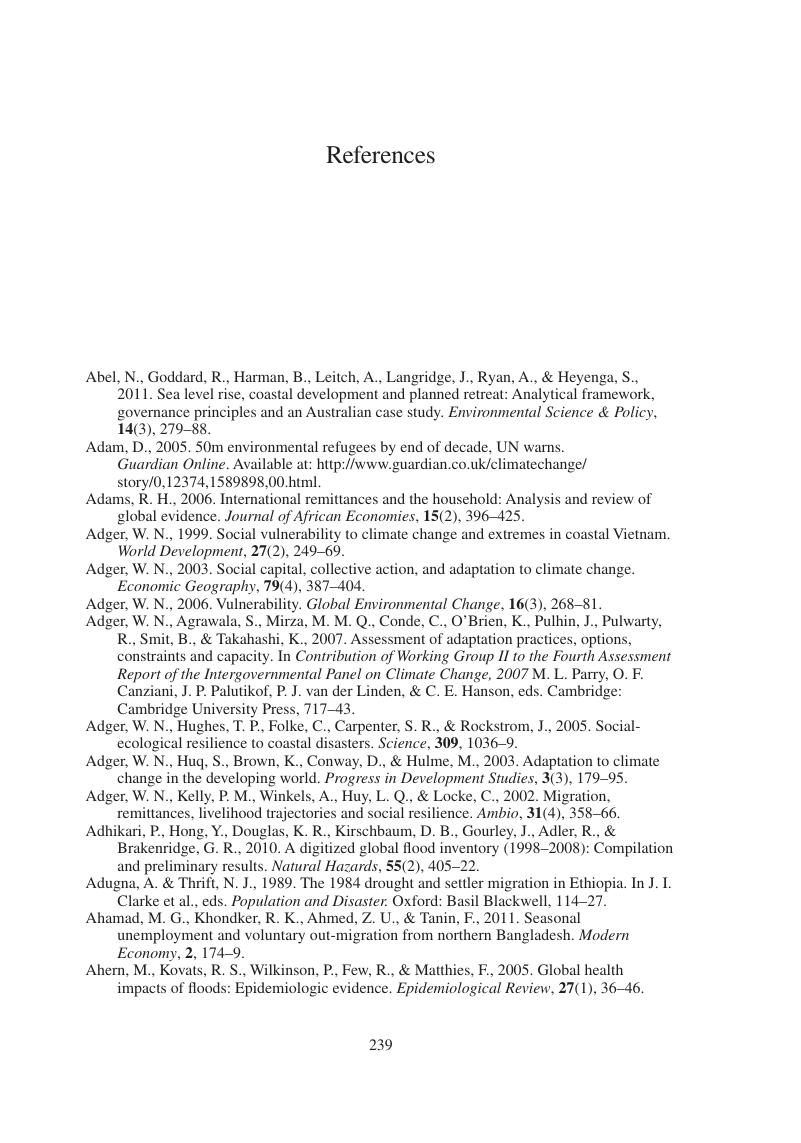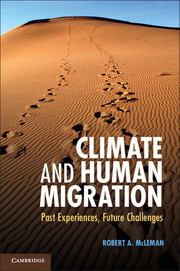Book contents
- Frontmatter
- Dedication
- Contents
- List of Figures
- List of Tables
- Preface
- Acknowledgments
- 1 An Introduction to the Study of Climate and Migration
- 2 Why People Migrate
- 3 Migration in the Context of Vulnerability and Adaptation to Climatic Variability and Change
- 4 Extreme Weather Events and Migration
- 5 River Valley Flooding and Migration
- 6 Drought and Its Influence on Migration
- 7 Mean Sea Level Rise and Its Implications for Migration and Migration Policy
- 8 Emergent Issues in Climate and Migration Research
- Annex Estimates of Global Population Exposed to Tropical Cyclones
- References
- Index
- References
References
Published online by Cambridge University Press: 05 December 2013
- Frontmatter
- Dedication
- Contents
- List of Figures
- List of Tables
- Preface
- Acknowledgments
- 1 An Introduction to the Study of Climate and Migration
- 2 Why People Migrate
- 3 Migration in the Context of Vulnerability and Adaptation to Climatic Variability and Change
- 4 Extreme Weather Events and Migration
- 5 River Valley Flooding and Migration
- 6 Drought and Its Influence on Migration
- 7 Mean Sea Level Rise and Its Implications for Migration and Migration Policy
- 8 Emergent Issues in Climate and Migration Research
- Annex Estimates of Global Population Exposed to Tropical Cyclones
- References
- Index
- References
Summary

- Type
- Chapter
- Information
- Climate and Human MigrationPast Experiences, Future Challenges, pp. 239 - 288Publisher: Cambridge University PressPrint publication year: 2013



